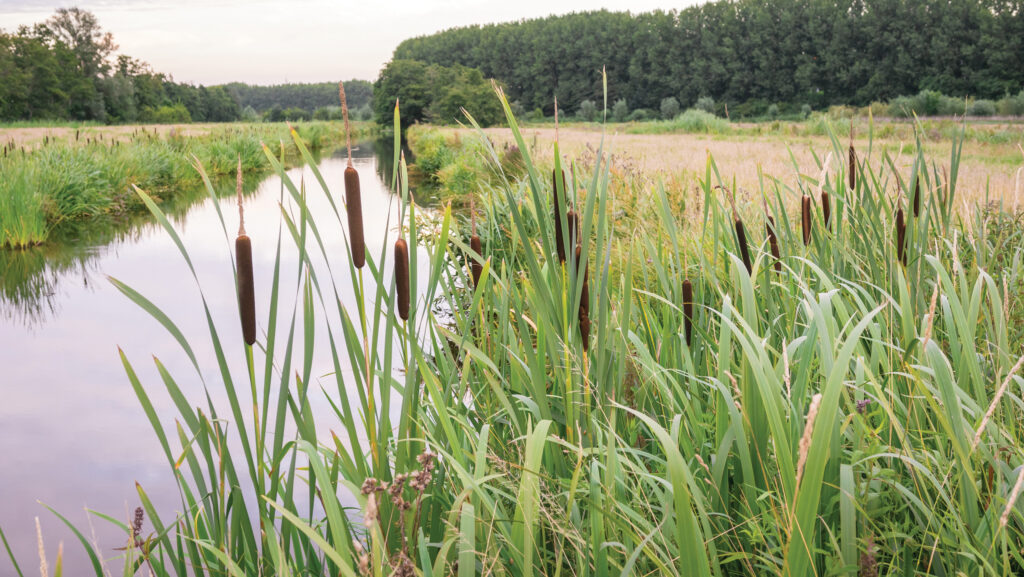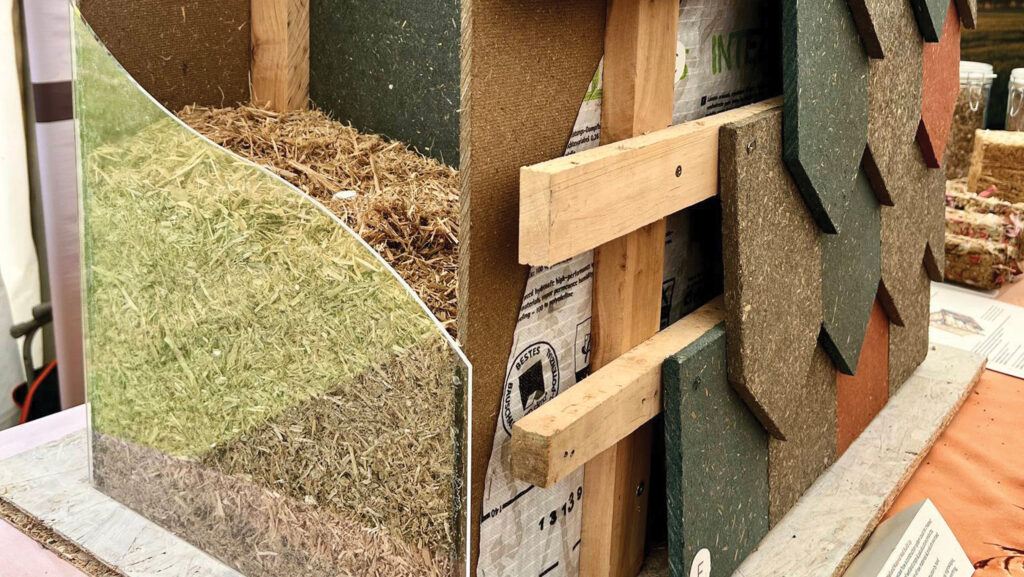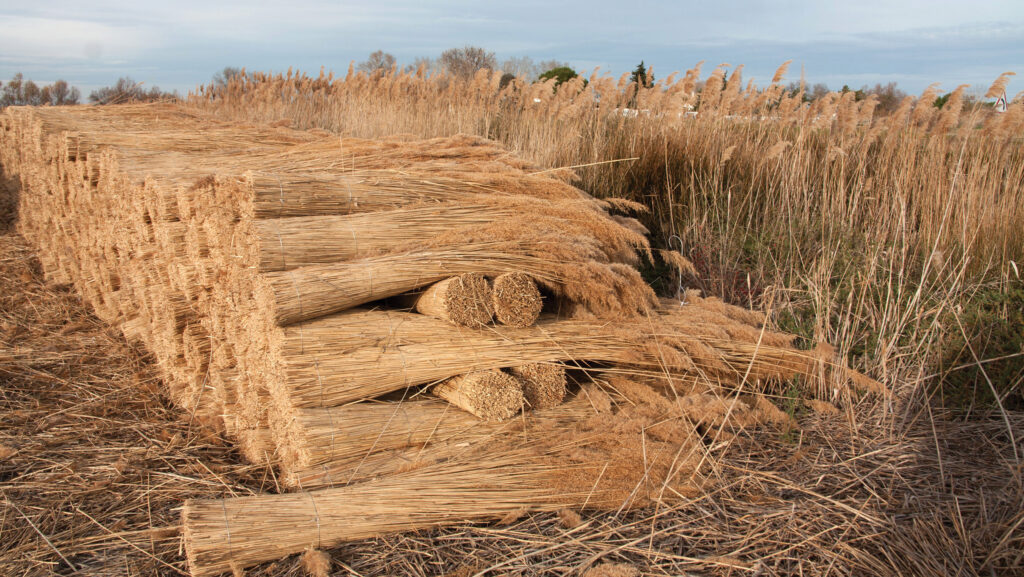Wetter farming: Growing typha for the construction industry
 © Adobe Stock
© Adobe Stock Field trials at the Horsey Estate in the Broads National Park are under way as part of a project investigating the growing of wetland crops to be used in the construction industry.
In the trials, typha – which also goes by the names of reedmace, cattails or bulrush – is being planted and harvested before being turned into compressed boards, which will then be used by the construction industry.
The FibreBroads project has received nearly £400,000 from Defra to explore the potential of wetland crops.
The project is looking at ways to reduce emissions from lowland peat soils while continuing with productive farming in an unpredictable climate.
See also: Why Yorkshire farmers are growing miscanthus and hemp
On previously drained land, it involves raising the water table to achieve wetland conditions and combines the harvest of the crop with the provision of ecosystem services.
It also presents some practical and complex challenges – not least of which is how to complete fieldwork.
Drones are being trialled for the planting phase and raised access tracks are being established.
As a result, a range of project partners are involved, including architects, building companies, conservationists and researchers.
They aim to understand the difficulties and any trade-offs, test the final products from wetter farming, and show how they might be used.
These partners include Hudson Architects of Norwich, which is working on a scaled-down prototype building using the typha products.
As typha can be microfibrillated, meaning that it self-bonds, it is of interest to the natural construction materials market, which also values its waterproofing and fire resistance properties.
As well as helping the region with climate change challenges, the project’s aims are to support the local economy by building a business network for local materials and protect valuable peatland, along with its wildlife.

© Hudson Architects
Water management
Previous drainage of peatlands, which took place centuries ago, means that they emit carbon, rather than storing it, while water management in the region is in the spotlight due to wetter winters.
As Andrea Kelly, environment policy adviser for the Broads Authority says, the Broads is almost all below sea level and faces the increasing challenges of flooding, carbon release and biodiversity loss as the climate changes.
“Some 85% of the Broads is farmland, so working with farmers is key to the future of this landscape.
“Paludiculture crops and smart water management are among the mosaic of solutions being assessed – holding water and sub-dividing it helps to slow the flow and clean water, as well as providing more for wildlife.”
Re-wetting land isn’t welcomed by everyone or appropriate in every situation, she accepts.
“Farmers need better incentives to move to alternative ways of managing low-lying farmland, as some of it involves land use change.
“This could be a new model for some – as well as producing crops they will be holding floodwater, reducing carbon emissions and preventing land subsidence.
“So the stacked revenue model is expected to be relevant.”

© Guy Sagaphoto.com/Alamy Stock Photo
Wetland crops
It’s quite different to rewilding, she stresses. “This is alternative cropping which we hope could work with the amount of rain that we are forecast to get.
“The best outcome is that we will be managing lowland peat soils more sustainably while supporting farmers who want to transition to more climate-friendly farming.”
She describes the Broads as a basin.
“Water is flowing in all the time. What we need to do is work out how we hold that water intelligently. It can be a very wet place, but it can also be a drought stressed place in the summer.”
Typha is just one of the crops that might have a future.
As well as its use in construction materials, the seedheads are harvested and used to produce BioPuff, an alternative puffer jacket-filling insulation material created by extracting fibres from the plants.
Produced by biomaterials company Ponda, it reduces reliance on feathers and synthetic fibres, as well as helping to build climate resilience and protect farmers’ livelihoods, the organisation claims.
Another wetland crop with a local market is reed for thatching.
While reedbeds have always been a feature of the Broads and around two-thirds of UK grown thatching reed comes from the Norfolk Broads, currently some 95% of the reed used for thatching comes from abroad.
Growing reed can be commercially relevant, believes Andrea, who anticipates that it will have a place in future farming schemes which meet the need to clean and hold water, as well as producing a crop.
“Quality reed for thatching comes from reedbeds that are cut every year or every two years. Currently, it provides an income for 15 cutters in the Broads.”
What is typha?
A perennial crop that grows from rhizomes, typha (common bulrush) forms dense stands of plants and is highly productive.
Semi-aquatic, it is tolerant of a range of growing conditions.
The above-ground biomass is harvested annually by cutting, the timing of which depends on the potential market and the economic and environmental balance that needs to be achieved.
Another benefit is that typha plants remove nutrients from water, acting as a sink for 30-60 kg of phosphorus/ha a year.
Typha beds also provide good habitat for wetland wildlife.
Financial Support in the Expanded SFI
Previous Countryside Stewardship options for lowland peat (known as SW17 and SW18) are expected to be among the expanded Sustainable Farming Incentive offer actions that will require endorsement from Natural England.
Two new actions should also be available, giving choice about how much the water level is raised.
On arable land, there will be a payment of £1,409/ha where the water level is raised to between 10-30cm below the surface and maintained throughout the year – with a slightly lower payment of £892/ha where the water level is kept at 31-50cm below the surface.
As before, there will also be various actions for wetland habitats, such as creating reedbed, fen or wetland mosaics at £1,605/ha.
Supplementary actions for rewetting, cutting and gazing will also apply to wetland habitats, expanding the rewards opportunity.
Finally, actions for buffer or habitat strips next to waterbodies and features – some of which are new and others more familiar – giving payments for the protection of water.
Paludiculture exploration fund
Natural England has announced 12 successful projects for England under the Paludiculture Exploration Fund, all of which are focusing on the barriers to developing commercially viable paludiculture on lowland peat soils in England.

